Portfolio Adjamé Tellier-Rozen
You can click on the different images to go to the appropriate section
Big Project / Video Games


Grave Umbra
Shine light on your obstacles. In a world ruled by death and shadows, a renegade former miner sets out to break the curse affecting the town's necropolis. Armed with his holy lantern and pickaxe, he travels from room to room.
But the once peaceful and sleepy cemetery is now tormented by ghosts returning from the dead. Will he manage to dodge the shadows and save the world?
Grave Umbra is a dark atmospheric puzzle game where a miner ventures into a cursed cemetery with only a pickaxe and a torch, trying to reach the end of the dungeon.
The game was created in 48 hours during the first Gamagora Game Jam, following the theme "What you don't see doesn't exist." This jam was an event I co-organized with Augustin Guyot, aimed at creating a student-exclusive game jam where Gamagora students could experience game jams in a relaxed and friendly environment.
The team :
-
Mushu / Mushu Damaschin - 2D Artist
-
Frooztyes / Yanis MIOLLANY- Game Developer
-
Ame / Adjamé Tellier-Rozen - Game Developer
To stay true to the theme, we designed a game where walls and doors cannot be destroyed or passed through if the player is in the dark. To break through obstacles, the player must equip their pickaxe, however, unlike the torch, the pickaxe does not emit light. This creates a challenge where players must strategically hunt down enemies and use the light emitted by their corpses to navigate through the mazes and levels.
We developed the game using Unity, and my primary role was designing the core gameplay mechanics, including the player's movement, attacks, and equipment. Additionally, I was responsible for implementing and designing all the different levels.
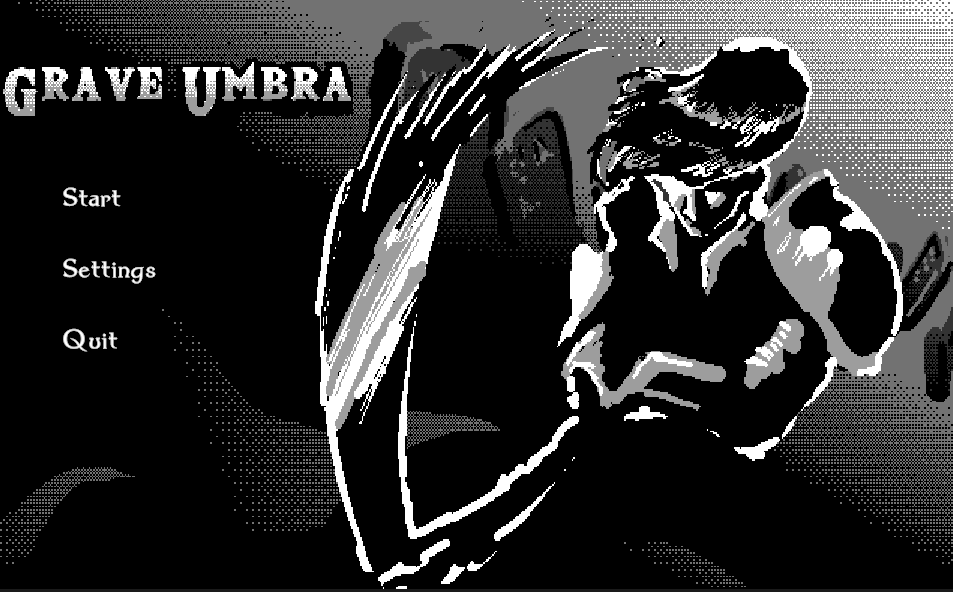



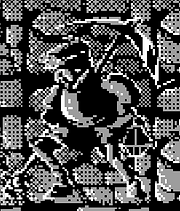

This is the overall look and feel of the game.
Players can walk in the dark but see nothing.
To navigate, they must switch between the torch for light and the pickaxe to break obstacles.
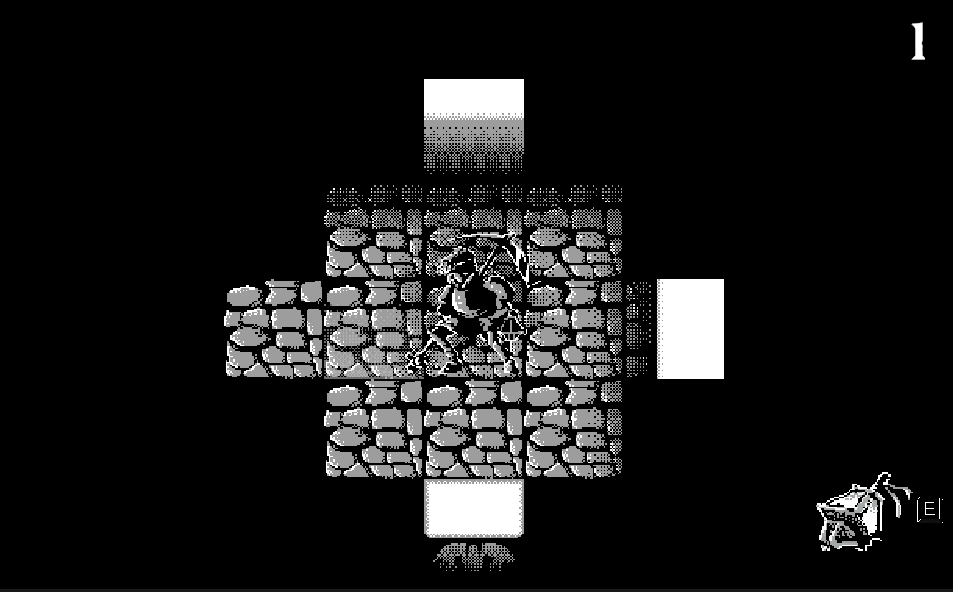

Enemies move toward the player when visible but stop if the player is in darkness.
To destroy a wall or pass through a door, you must first see it, meaning you need light.
Strategically using enemy corpses as light sources is key to progressing through the level.
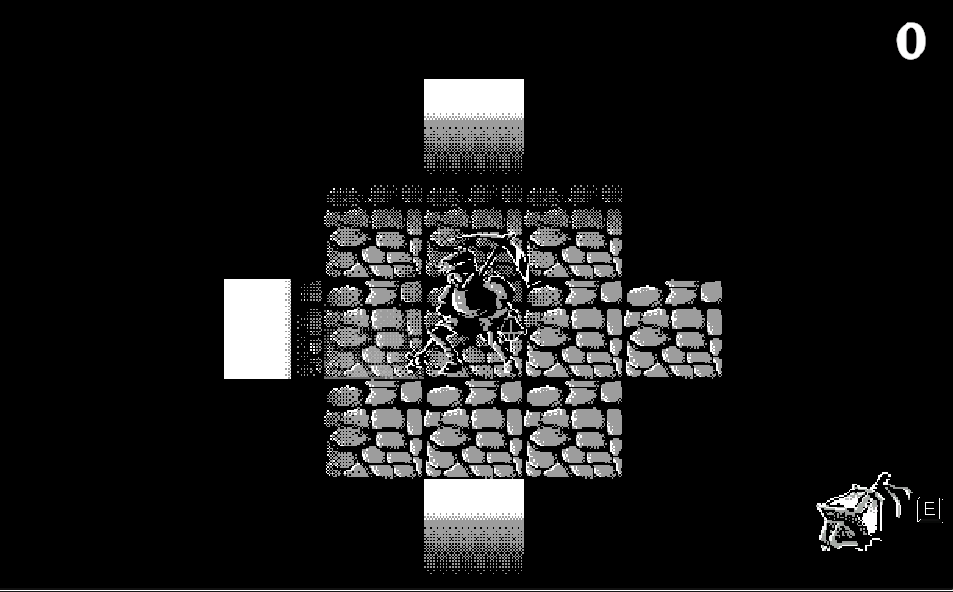








Out Of Place
Out Of Place is a game of exploration and mystery where the player must hunt down hidden mimics in a strange, distorted environment.
The game was created in 48 hours during the 22nd Game dev Party Jam in Lyon with the theme "What is the Enemy". As the Jam sponsor was the "l'Observatoire des Armements" or Armament Observatory the goal was to also have a military theme/undertone.
For as what was the team :
-
Titouan Vaillant – Game Design & Level Design
-
Augustin Guyot – Developer
-
Adjamé Tellier-Rozen – Developer
-
Aristide Laurent – 3D Artist
-
Joseph Heretynski – Art Director
We decided to go with the idea of a mimic that can disguise itself by morphing into another object. However, since it’s a mimic and not a real object, there will always be a small hint or something slightly out of place to help the player identify it.
As for the military theme, we designed each room to have some connection to the military.
We made the game using Unity, and my role involved working on some of the gameplay mechanics. My main focus, however, was setting up the menus and ensuring smooth transitions between scenes.
I was also responsible for all the UI elements, including the life system, menus, game over screen/system, the dialogues and hints but also the overall management. I dedicated a lot of time to debugging to ensure everything worked flawlessly.
I also implemented all the audio elements, including damage and hit sounds, as well as ambient music. Moreover, I worked on the audio mimic, using sound spatialization in the last level.
In addition, I collaborated with the team to design and choose the different mimics to implement.







This is the overall look and feel of the game.
For the tutorial, we designed two basic mimics to teach the player the fundamentals. Since it was the last level created during the game jam, it’s the least polished.





For the first level, we aimed to recreate a child-like room, imagined as it might appear from memory.
This room features three mimics:
-
A planet that rotates in the opposite direction,
-
A star that doesn’t shine in the dark
-
A video surveillance camera.
For the second level, we went with the concept of an abandoned bunker. This level features two mimics:
-
The first is a light that doesn’t blink like the others
-
The second is a clock where the minutes move backward instead of forward.


For the third level, we aimed to represent an officer’s lounge. This level contains three mimics:
-
The first is a bottle that doesn’t cast shadows,
-
The second is a wall with a strange texture that clips
-
The last is a mimic disguised as a life indicator in the menu.
For the final level, we went with the concept of an operation room. This level features two mimics:
-
A poster that criticizes the military
-
A radio that continues to play sound even when the audio is muted in the menu.
Then to complete the game, the player must shoot the screen to shut down the machine/weapon.









Space Hunt
Space Hunt is a family-friendly board game developed during
a Game Board Jam in 2024.
The challenge was to design a game around the theme of inactivity,
additionally, a pre-determined figurine was required to guide the design
of our game.
Our initial idea was to create an asymmetrical game, where each turn,
one player would have access to certain information, while the other
players would have different information. By sharing this information,
players would work together to progress through a sort of labyrinth.
We received a monster/insectoid figurine and decided to center our game around the exploration of a spaceship with space pirates.
Players take turns embodying an astronaut tasked with recovering artifacts from the wreck of a spaceship. With the support of their team, they must try to escape the creature haunting the ship.
We were a team of four people: we all worked on the game design and mechanics, but two members mainly focused on card balancing, another on writing the guides and managing the number of cards, while I focused on the artistic aspect by creating the different visuals. Later on, I also rewrote the rules to make them easier for an external player to understand.
If you want to understand the rules, I recommend checking out the rules PDF as well as the presentation video.
The goal of the game is to collect a certain number of artifacts before escaping the ship, while avoiding the monster roaming on board.
The active player has two cards: one visible to them and the other to the
other players. These cards contain movement information that affects
both the player and the monster. The players must collaborate to choose
the best movement to navigate the ship effectively, without revealing
exactly what they see on the cards.
They can choose between four actions: the active player’s walk, the crew’s
walk, the combined run of both the crew and the active player, or waiting.
-
Walking allows both the astronaut and the monster to move in the directions indicated on the card.
-
Running allows the astronaut to move faster by using the two run indications, but the monster then hunts the astronaut, moving a number of spaces equal to the highest run value shown in the direction of the astronaut.
-
Waiting allows the player to stay in place and prepare for a future move by rotating 90° before moving. Meanwhile, the monster roams the ship, advancing one space ahead.
If the players manage to leave the ship with the required number of artifacts, they win. However, they lose if the monster catches one of them or if the deck of oxygen cards runs out.
Additional, less important elements enhance the game, such as astronaut corpses that allow the players to recover oxygen when passing over them, or the fact that if the monster moves off the board, it travels through the ship’s ducts and reappears on the opposite side.
On the visual side, I started by designing a character in two
different positions, each representing one of the player's
choices: walking or running.
Based on these two states, I designed the visuals for the cards, which are the central element of the game. We chose a front side that indicates possible movements, while the back represents an artifact floating in space, which also helps to show the correct orientation of the cards.
Once the cards were completed, the next step was the game boards. For this, I received help from Titouan Vaillant, another team member, who focused on the boards so I could work on the various icons and, finally, the level initialization tiles.

















Tracking symbol
Rotation symbol





The 4 direction symbols

Creature's compass rose

Astronaut's compass rose
The initialization tiles for the creature, the astronaut, and the corpses on the board






The initialisation tiles for the artifacts on the board


Addition for the objective locations

The initialization tiles for the entry and exit on the board

Wait indication card















Project Echoes
Project Echoes is an ongoing project to create a 2D platformer capable of adapting and evolving with you.
We want you to discover your gameplay style while playing, helping you uncover your personality and see if it evolves during the game.
The game will adjust itself to match your abilities.
Love finding hidden flames? The game will place more in challenging spots. Struggling with jumps? The platforms will move closer, and you'll be able to jump further.
Carried out during my Master 1 internship with the support of the incubator, I led a project aimed at integrating artificial intelligence into the field of adaptive video games.
The objective was to make AI more accessible in game development by creating tools for developing such games.
We also considered the commercialization of the developed tools.
Our work focused on developing a 2D platformer game integrating several AI-based tools, including:
-
A player profile classification system: This tool analyzes each user’s playing style.
-
A procedural level generator: This generator creates levels based on the player’s profile.
-
A feasibility verification tool: It ensures that the generated levels are playable and balanced.
The project was completed over a three-month period using Unity, C#, Python, and Aseprite.
I was responsible for the visual design, the development of clustering for player personality classification, and the implementation of some game mechanics.
I also worked on a pathfinding algorithm to verify the feasibility of our levels, but it is not yet finished or ready for integration.
Visual Design and Animation
One of my most important roles in the project was developing the entire artistic direction of the game.
I opted for a pixel art and minimalist graphic style. I chose this approach for its simplicity and nostalgic feel, while ensuring great flexibility for procedural level generation.
I used Aseprite, a software specialized in pixel art creation and animation, to design the characters, environments, and interactive objects in the game.
For the entities
The main character, a robot, was designed to represent an intelligence
that evolves throughout the game. Its face is hidden to illustrate the idea
that, while we often know what an AI looks like on the outside, but we rarely
know how it works on the inside. To make it more lively and unique, I added
numerous animations that clearly differentiate it from the environment.
It has an idle animation, a running animation, a jumping animation, a damage
animation, and a death animation.
The enemies, like the golem, were designed with simple shapes and natural
colors to create a strong visual contrast without appearing threatening.
For the animations, we wanted something mechanical with few frames
and minimal animations. It has a movement animation and a death
animation.
The bonus, a flame, was designed in similar natural bluish tones to resemble a
will-o'-the-wisp, which in legends are often chased. For the animations, we
wanted something simple to make it stand out from the environment, so we
only created a single oscillation animation.
For the environment
There are two parts to the creation of the environment: the background with the Parallax effect, and the interactive environment where the player moves, which is the actual level.
For the background, we opted for a simple, mountainous design to avoid cluttering the screen. This background is composed of 7 layers, which, with the Parallax effect, allow for smooth transitions when reaching the edges of the screen.
For the level environment, we chose an organic and natural forest-like
design. For this, everything was created using the tile and tilemap system,
as we wanted to generate levels procedurally, and tiles made this task
easier. Special attention was given to the edges of each tile to ensure
smooth and seamless transitions.
We also created an additional "overlay" layer to decorate the levels and
add more detail to the environment.
Gameplay Classification Algorithm
One of the major challenges of the project was to develop a system for classifying player personalities based on in-game behavior. I was responsible for developing a clustering algorithm to analyze and categorize players according to their play style.
First, we collected the data. I defined a set of metrics to track and analyze player behavior, such as the frequency of jumps, movement speed, and interactions with enemies. This data is collected during gameplay and sent to an online database at the end of each level.
After that, I performed data analysis and formatting to begin training and creating a predictive model. For this, I used K-means clustering methods. This model partitions players into several groups based on their behaviors, and these different groups represent the various player profiles. The algorithm was designed to adapt to different types of data and games, which is essential for our tool.
The integration of clustering required constant adjustment of parameters to improve the accuracy of the classification. This involved retraining the model and optimizing the clusters by analyzing the data and adjusting the number of clusters to better represent the different play styles. Once player classification is complete, the clustering results are used to customize the levels based on each player's profile. An experienced player will encounter more obstacles and enemies, while a beginner will be presented with simpler and more accessible levels.
Here are the clusters we can obtain in our game after receiving around thirty data points.
We can clearly see the formation of four personality groups.
If you want to explore the demonstration code, click on the image.
Itch page link






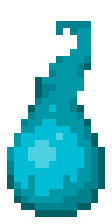








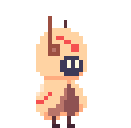


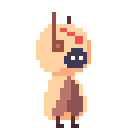



















Pafnito

This Jam game was designed in less than 48 hours during the 2023 Scientific Game Jam in Grenoble. Where we won the Audience and the Gameplay award.
The challenge was to create a game to illustrate and explain the thesis of a PhD student who was part of our team.
To find the game :
You will need to assist Professor Pafnito Tchobytchov by checking that the various
parts are valid through their modules and by repairing and removing the pieces
that are in too poor condition.
Explore the different modules to familiarize yourself with them, then continuously
test your knowledge. The higher your success rate, the more information you will unlock, allowing you to save time and eventually fully automate your process. Then, you can enjoy your coffee after a long day.
We were a team of 7 people, gathered around the thesis of Olivier Occello (https://theses.fr/2024GRALT005), which focused on testing and calibrating integrated circuits.
(Our team consisted of 2 game artists, 2 developers, 2 game designers, and 1 sound designer). In this project, I contributed as a game designer and supporting artist.
The thesis proposes a method to improve the testing processes of integrated circuits, particularly those operating at high frequencies. Using this method, it becomes possible to efficiently test these circuits and then detect those that can be "repaired." With this calibration, it is possible to improve efficiency, thus reducing losses and waste of energy, water, and resources!
We aimed to represent the idea of automating the sorting of electronic circuits
into good and bad states to minimize resource waste. To achieve this,
we simulated various tests to detect circuit issues, with the eventual goal
of repairing them when possible.
One of our objectives was also to implement options to optimize and
automate the analysis of the circuits. However, due to time constraints,
we focused on the manual analysis of the circuits.
During this jam, I was involved in designing the game mechanics,
creating different levels, managing gauges, and level design.
On the artistic side, I also contributed to the creation of necessary
assets after designing the Itch.io page and participating in the
production of the YouTube trailer.


























The Tarot of the Community
The Community Tarot is a project that came from a simple observation.
It’s frustrating to have to carry eight different games in your bag when
they could all be combined into one.
So, I decided to create a tarot game that could merge several different games, making it a "Swiss army knife" of games — one game for everything.
Since I don't have the rights to the licenses for these games, this card game was made solely for my personal use and that of my friends.
I merged Tarot (the classic card game), Werewolf, The Resistance, and Time Bomb.
The central element of this project is Werewolf, a game our group plays frequently. We added many roles and rules to ensure that each game is always interesting and engaging. I selected some of the roles we had invented to maximize possibilities while ensuring that the cards remained compatible with one another.
For the visual design, the cards include several elements:
The cards in the game have a total of 6 colors, each representing one of the card suits or providing information about a team or functionality:
-
Green: Trumps – includes villager roles.
-
Blue: Clubs – includes villager roles.
-
Red: Hearts – includes werewolf roles.
-
Purple: Spades – represents ambiguous roles with variable win conditions or roles that changes from player to player.
-
Orange: Part of the Diamonds – represents solitary or neutral roles.
-
Pink: Other diamonds – includes external game elements for The Resistance and Time Bomb.
A booklet containing all the roles was created for this first version of the game. However, I am currently working on a second version with improved visuals and a redesigned interface, as some cards lack readability. This new version will also aim to be usable without specific elements tied to certain licenses, to avoid any issues.
Therefore, it will take some time to rework everything before I can make the rules available.
For the roles in Werewolf, several people contributed to their creation:
-
Hugo Bensbia
-
Maelan Tiger
-
Loïc Marmey
-
Benjamin Sarret
-
Lena Page
-
Margaux Lutz
-
Louis Lafeuille
-
Mathias Pico-Hustache
-
Titouan Vaillant
-
Louis Salagnon
The card’s value (number + suit or trump value)
An indicator for Time Bomb (explosion, wire, or nothing)
A color providing information about the player's team
An illustration and the name of the role or game element


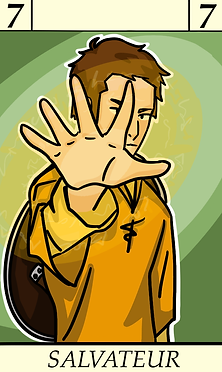

























Custom Beers
I designed six fantasy beer label visuals, each representing something that holds special meaning for my friend and me.







The Boarfesque beer is a reference to an IKEA plush toy that always looks tired and disheartened. We use it as a logo and even as a mascot for various projects, especially on tough or long days.
The Is What To Do beer is a reference to our online gaming group that plays many video games. It features the crab, our logo, which I had designed in the past.
The Fumée beer is a reference to our afternoons playing the board game Root. It specifically recalls a tragic afternoon when a vagabond set fire to a clearing that contained the entire army of an unsuspecting Cat Marquise.
The À l'Eau beer pays tribute to our early evenings out, where we seemed cursed to always meet at the bar on rainy days
(due to the crowd, we always found ourselves sitting on the terraces.)
The Quantique beer represents a game that is particularly dear to us, Outer Wilds, and I included Stitch, a character greatly loved by my friend.
The Traditionnelle beer reminds us of the start of our evenings together, along with the various projects and fun moments we’ve shared.
Parcours

















